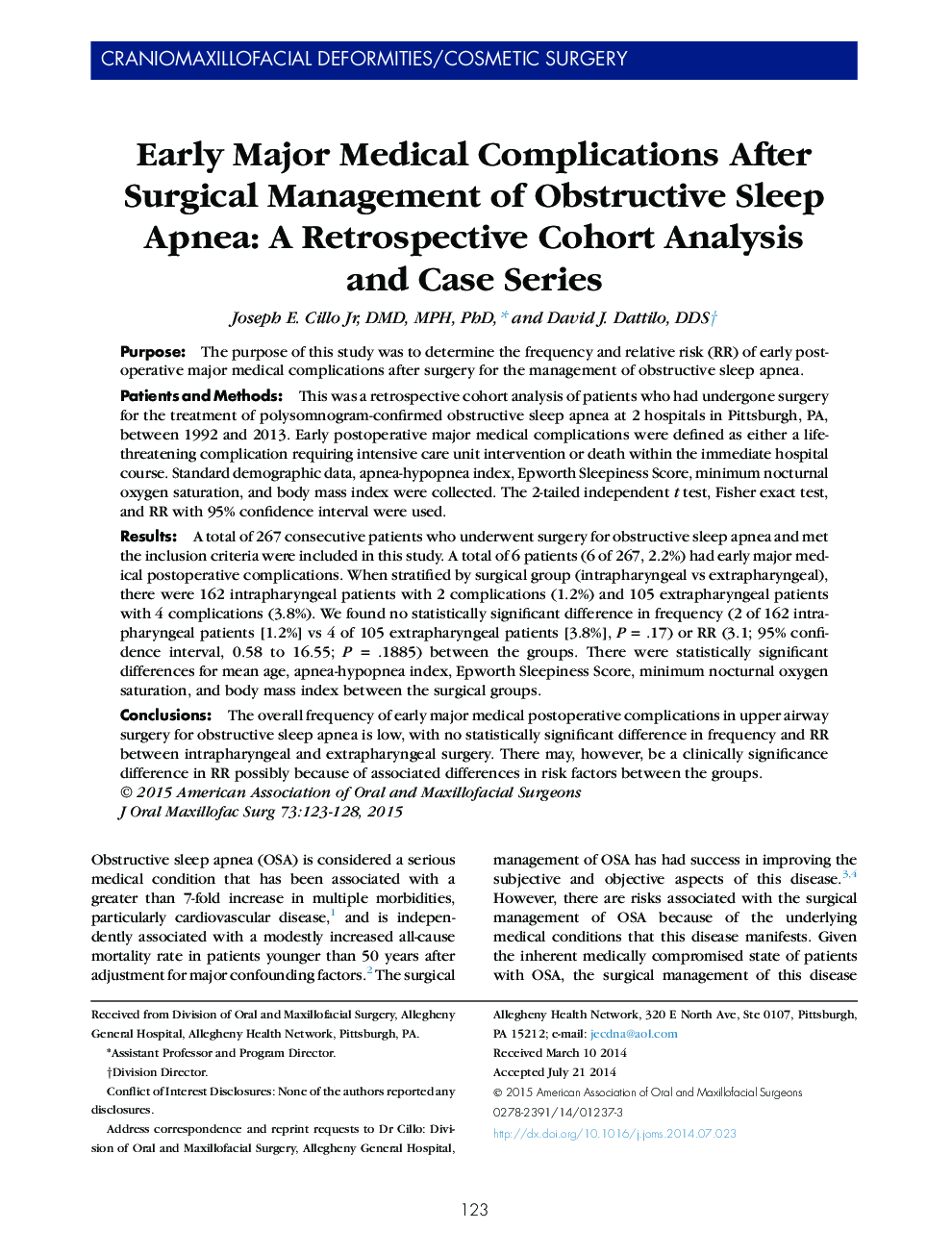| Article ID | Journal | Published Year | Pages | File Type |
|---|---|---|---|---|
| 3153289 | Journal of Oral and Maxillofacial Surgery | 2015 | 6 Pages |
PurposeThe purpose of this study was to determine the frequency and relative risk (RR) of early postoperative major medical complications after surgery for the management of obstructive sleep apnea.Patients and MethodsThis was a retrospective cohort analysis of patients who had undergone surgery for the treatment of polysomnogram-confirmed obstructive sleep apnea at 2 hospitals in Pittsburgh, PA, between 1992 and 2013. Early postoperative major medical complications were defined as either a life-threatening complication requiring intensive care unit intervention or death within the immediate hospital course. Standard demographic data, apnea-hypopnea index, Epworth Sleepiness Score, minimum nocturnal oxygen saturation, and body mass index were collected. The 2-tailed independent t test, Fisher exact test, and RR with 95% confidence interval were used.ResultsA total of 267 consecutive patients who underwent surgery for obstructive sleep apnea and met the inclusion criteria were included in this study. A total of 6 patients (6 of 267, 2.2%) had early major medical postoperative complications. When stratified by surgical group (intrapharyngeal vs extrapharyngeal), there were 162 intrapharyngeal patients with 2 complications (1.2%) and 105 extrapharyngeal patients with 4 complications (3.8%). We found no statistically significant difference in frequency (2 of 162 intrapharyngeal patients [1.2%] vs 4 of 105 extrapharyngeal patients [3.8%], P = .17) or RR (3.1; 95% confidence interval, 0.58 to 16.55; P = .1885) between the groups. There were statistically significant differences for mean age, apnea-hypopnea index, Epworth Sleepiness Score, minimum nocturnal oxygen saturation, and body mass index between the surgical groups.ConclusionsThe overall frequency of early major medical postoperative complications in upper airway surgery for obstructive sleep apnea is low, with no statistically significant difference in frequency and RR between intrapharyngeal and extrapharyngeal surgery. There may, however, be a clinically significance difference in RR possibly because of associated differences in risk factors between the groups.
